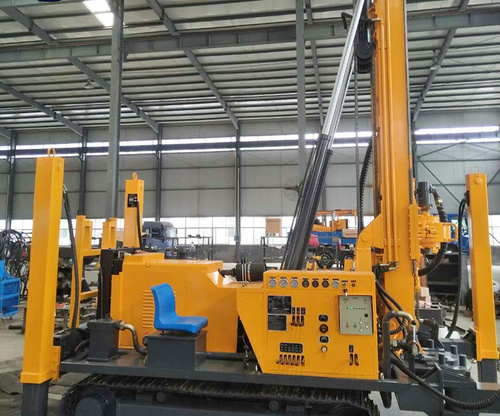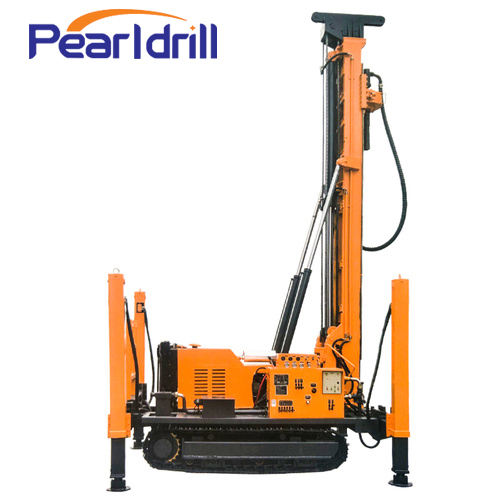How China's Water Well Rigs Will Drill Deeper for Groundwater by 2025
With climate change getting tougher, the population growing, and demand for water in industries and agriculture skyrocketing, water scarcity is a huge challenge right now. Groundwater is becoming a super important strategic resource, so exploring and developing it is crucial. As we hit 2025, the Chinese water well Drilling Rig industry is really stepping up. They are using a bunch of tech innovations, smart upgrades, and green development ideas to show off their strong capability in digging deep for groundwater and unlocking new water potential.

Precision Exploration: It's Like Having X-Ray Vision for Groundwater!
1. High-Precision Geophysical Tech Integration: Modern water well drilling rigs aren't just simple drilling tools anymore. They are integrating advanced geophysical exploration modules like electrical, magnetic, and seismic methods. Using vehicle-mounted or track-mounted platforms, these rigs can create 3D geological models of the target area before drilling. This helps them pinpoint the exact location, depth, thickness, and water richness of aquifers.
2. AI and Big Data Analysis: Exploration data gets processed by cloud-based AI algorithms. These can automatically identify geological anomalies, predict groundwater depths, and estimate water volume. This hugely reduces the risk of drilling blindly and boosts the success rate of hitting water.
3. Real-Time Remote Monitoring and Data Sharing: Rigs are equipped with sensors that can send back data on formation parameters, resistivity, gamma values, and more, all in real time. Geologists and decision-makers can then share this data through remote platforms to jointly analyze groundwater distribution, providing a scientific basis for drilling plans.
High-Efficiency Drilling: Where Speed Meets Precision Perfectly!
1. High-Power Compound Drilling Tech: Because China has such varied and complex geological conditions, new rigs are commonly using a compound drilling mode. For example, they combine Down-The-Hole (DTH) hammer drilling with mud rotary drilling. They use efficient DTH hammers for breaking through hard rock, then switch to mud rotary when they hit loose ground. This ensures fast and efficient drilling across all types of strata.
2. Smart Hydraulic Control Systems: Fully automatic hydraulic control systems can intelligently adjust drilling pressure, rotation speed, and feed rate based on the hardness of the rock. This prevents excessive drill bit wear or drilling resistance, making sure the drilling process is smooth and highly efficient.
3. Automated Drill Pipe Handling Systems: Large, deep well drilling rigs are equipped with robotic arms and automatic drill pipe handling systems. This drastically cuts down on manual labor, speeds up drill pipe connection and disconnection, and ultimately shortens the overall drilling cycle.
4. Downhole Navigation and Deviation Correction: For super deep wells, rigs are adopting downhole navigation technology similar to what's used in oil drilling. Sensors inside the drill bit monitor the hole inclination and direction in real time, and can even make minor adjustments to correct deviations, ensuring the borehole is perfectly vertical and accurate.
Green and Eco-Friendly: A New Standard for Sustainable Development!
1. High-Efficiency, Low-Carbon Power Systems: They are using new energy-efficient engines or electric/hybrid power systems. This significantly reduces fuel consumption and carbon emissions, helping meet national carbon reduction goals.
2. Harmless Mud Treatment: For the drilling mud produced during operations, rigs are equipped with mud solidification, centrifugal separation, and other treatment systems. This allows for mud recycling or harmless discharge, preventing pollution to surface water and soil.
3. Low-Noise Design: By optimizing structural design and using new noise-reducing materials, rig operating noise is significantly lower, reducing disturbance to the surrounding environment and residents.
4. Smart Remote Monitoring and Management: Rigs can use IoT platforms to monitor various environmental indicators in real time, like wastewater discharge and noise levels. They can also share this data with environmental protection agencies, enabling transparent and standardized management.

Smart Operations & Maintenance: Efficient Support for the Entire Lifespan!
1. Self-Diagnosis and Fault Pre-warning: Built-in sensors and smart algorithms can monitor the operating status of various rig components in real time. They can pre-warn about potential faults and suggest maintenance, drastically reducing unplanned downtime.
2. Remote Diagnosis and Maintenance Guidance: Engineers can connect to the rig remotely to perform diagnostics, providing online technical support and maintenance guidance. This speeds up service response times.
3. Big Data Driven Optimization: Long-term accumulated drilling data is used to analyze rig performance, geological characteristics, and construction plans. This provides optimized strategies and efficiency improvement solutions for future drilling projects.
4. Modular Design and Quick Maintenance: Rig components are designed to be more modular, making them easy to disassemble and replace. This shortens maintenance time and boosts equipment availability.
Contact us
To learn more about Chinese water well drill rigs, click the link and contact us.

